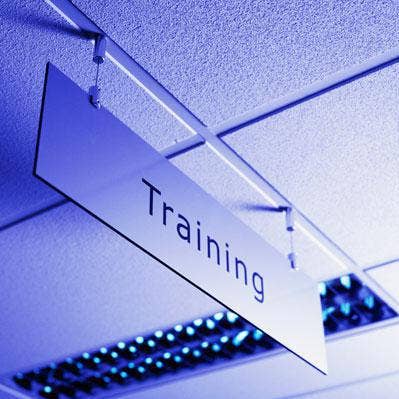Google VP And Cloud Migration Guru: 5 Best Tips For A Successful Transformation
With Google Cloud’s launch of its new Rapid Migration Program, cloud migration expert Stephen Orban breaks down the five best practices customers need to achieve a successful cloud migration.

As a former technology leader for the likes of Bloomberg, Dow Jones and Amazon Web Services, Stephen Orban has overseen the successful implementation of countless large cloud migrations over the years.
“I was the CIO at Dow Jones when we went from 56 data centers down to six, reallocated about $100 million in cost to new product development, and migrated 75 percent of our infrastructure to the cloud in the process,” Orban, vice president of migrations for Google Cloud, told CRN. “There are many things I’ve learned through my experiences doing this.”
Orban breaks down the five best practices for a cloud migration that all enterprise companies should know about.
“Of course there’s more than five best practices to a cloud migration, but these five that I hone in on—you really need to get these right for a migration within a large enterprise to be super successful,” said Orban, who joined Google Cloud in September after nearly eight years at AWS.
[Related: Google Launches ‘Biggest’ Cloud Migration Program Ever: 6 Key Things To Know]
Google Cloud’s New Migration Program
Orban spoke to CRN on the eve of Google launching its largest cloud migration program in the cloud computing company’s history.
Google Cloud unveiled its new Rapid Migration Program (RaMP) this week that combines all of the company’s products, programs and engagement models into a unified program looking to accelerate cloud migrations 10 times faster.
“We’re going to bring everything into one motion with RaMP, which is our biggest investment and focus area for accelerating cloud migrations to date,” said Orban. “We’re working very closely with partners to align our best practices with their approach, with a goal of 10Xing how quickly and reliably our customers are able to migrate so they can see faster value of moving to the cloud and fund more of those new initiatives.”
From executive alignment and training to governance and the formation of ‘cloud of excellence’ teams, Google Cloud’s Orban breaks down the five most important tips for customers and partners hoping to achieve a successful cloud migration.

You Need Executive Alignment Everywhere
You need a business case articulating the ‘why’ that executives across business, IT, finance, security and operations are aligned on. Particularly in the cases where sometimes executives move on to take different roles, you want to make sure that you have many executives aligned to the business case.
Ten years ago in the earlier days in the cloud, just having a total cost of ownership argument about “we’re going to save some money” was maybe good enough for a business case—because a lot of the companies were kind of early adopting and willing to go on faith that the cloud was going to be better.
Fast forward to today: we’re seeing business cases that need to be a lot more sophisticated than that. Not just how much money the customer can save, but how much faster they’re going to be able to deliver software? How much faster are they going to be able to do mergers and acquisitions? How much faster are they going to be able to grow their customer base? How can they tie their cloud migration to the top three are set of strategic corporate objectives?
So making sure that we’re helping our customers really nail that business case of the why they’re doing what they’re doing and then getting as many executives across the company to align on it.

Create A Training Plan To ‘Neutralize’ FUD, Successfully Scale
The second is having a great training and learning plan tailored to each role so individuals can obtain new skills and neutralize the FUD (fear, uncertainty and doubt) accompanying changes to how they work.
In some of these large enterprises where they have IT associates and IT personnel who have been in the same role doing similar things for five-, ten- or twenty years, it’s a bit of a change for them to learn how to use the cloud and get their skills enabled so they understand how to work in the new environment.
It’s not like physics have changed. Computer science fundamentals are still the same, but the scale at which you operate grows really quickly.
So it’s important to help our customers, and our partners are helping our customers, really land a good training and enablement plan so that everybody who’s working on migration understands how their role fits into it, how it’s going to change, and all the new things that they need to learn and enabling them with that.

Have A Cloud Center Of Excellence Team
A cloud center of excellence team harvests best practices, sets up and maintains the landing zone, and sets blueprints for how teams will scale usage and migration.
This should be a team of folks, ideally from a diverse background—so not just developers, not just operations, not just security—but developers and operations and security and folks from IT finance discipline who really understand the nuances of the move to the cloud. Who understand their cloud providers’ capabilities and techniques really well to stay on top of the roadmap so they can continue to push innovation throughout the rest of the company.
But also really harvesting and developing the best practices in a migration so that the customer can codify those and not make the same mistake twice.
Another thing I really like to see cloud teams do is set principles for how they’re going to deal with ambiguity when stuff comes up in the migration. Undoubtedly, you might run into a scenario that you haven’t seen before. So how are you going to handle that? One of my favorite principles is something I would call the “two-week rule,” where application teams will be given two weeks to finish the migration for an application once they started. It really helps have them focus on how quickly things are moving.

Have Clear Objectives For ‘More Concrete And Tangible Outcomes’
The fourth is having a clear measurable OKRs, or objectives and key results, that tie to the business case of more concrete and tangible outcomes that are going to be driven in the next month, quarter, year, etc.
For example, move the first migration wave of 100 applications by the end of quarter one; train 10 percent of my people by quarter two; have the cloud team establish the landing zone by quarter three—things like that. Having those clear lines in the sand that are drawn so everybody who’s working on the migration and knows what their objectives are is important.
A well-defined OKR that’s broadly communicated and measured, inspected and regularly reported on is key.

‘Great Governance’ For A Steady Cadence Between Providers And Customers
The fifth is great governance. So making sure we have a steady cadence between Google Cloud, the partner who’s helping with the migration, and the customer to look at where we are on that OKR and the objectives we’re trying to drive on a weekly basis.
A strong governance with regularly scheduled reviews of progress, triaging risks, understanding the challenges and escalating issues early is key.
For example, if there’s something that Google needs to come bring more resources to help on, we can escalate that within our organization and the customer can do that by bringing other business lines to bear. The partner can also bring their resources to bear if needed.
It’s really about making sure that we drive these five things consistently throughout the entire engagement. How do we bring those five best practices to make sure that our customers and partners are enabled and that we’re making us readily available to them. That’s what RaMP is all about.